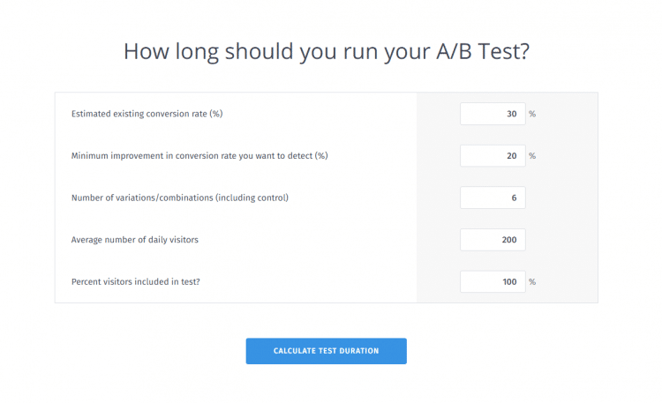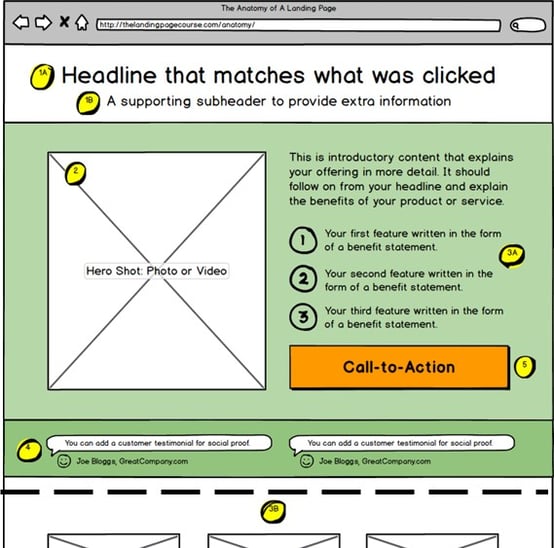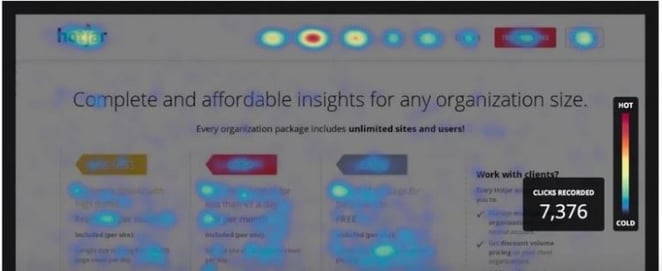360 Lead Strategist
How can you optimize a low-traffic site?
360 Lead Strategist
How to develop great optimization test strategies with low trafic on your website? Learn from a #pro!
Attracting visitors to your site is one thing, getting them to then make a purchase or subscribe is something else altogether. With a team of digital media experts, it’s easy to identify and reach the audience most aligned with your business goals. But be careful not to overlook the importance of optimizing the site or page that comes after the user clicks on your ad! It’s an essential way to make the most of your traffic and improve the overall performance of your marketing initiatives.
As soon as a company has access to navigation data from its digital platform, there are lots of ways it can start testing, and lots of tools to help with optimization.
One thing that discourages companies from starting an optimization program is the belief that they don’t have enough site traffic to be able to glean valuable insights. Don’t panic, the situation isn’t hopeless!
What measures need to be in place to set up testing?
First of all, to improve the performance of a page, you need to ask yourself what you’re optimizing and for whom. This is an essential catalyst for your efforts and will ensure that your tests are useful and appropriate.
You need to avoid forming hypotheses based on intuition, and instead set your course based on navigation data from your digital platforms. This will allow you to confirm the impact of your tests without a shred of doubt.
The three main measures you’ll need to have in place before you start testing are:
- Conversion rate: Ratio of total number of page visitors to number of visitors who take the exact action you’re trying to measure (e.g. the user adds an item to their shopping cart).
- Confidence level: Serves to determine whether your test results are valid or not. Confidence level represents the probability that the same results would be obtained if the test was repeated. For example, a confidence level of 25% is very low and wouldn’t allow you to draw any significant conclusions, while a confidence level of 95% is considered a best practice.
- Minimum detectable effect: Represents the minimum level of improvement to a page’s baseline conversion rate that you’re willing to detect with a test, to a certain degree of statistical significance. For example: increasing your conversion rate from 3% to 3.3% represents a lift of 10%.
Why is optimization testing more complex with less traffic?
You’ve analyzed the pages of your site, you’ve identified an opportunity for potential optimization, you’ve formulated your hypothesis and the test is live… Now all you need to do is wait to reach the confidence level you’re aiming for.
This waiting period is a cost of optimization testing. To reach statistical confidence, a test needs to be online and seen by a certain number of visitors before you can draw meaningful conclusions. When the measures listed above are in your possession, you should be able to calculate the likely duration of your test using a sample size calculator (click to see the Visual Website Optimizer calculator).

This kind of tool allows you to quickly see that, all other things being equal, if the volume of users drops, the estimated test duration will significantly increase. This is the first challenge of testing with lower traffic.
According to this tool, doing an A/B test on a page that gets 100 visitors per day with a conversion rate of 5% and a lift (detectable effect) of 20% (e.g. that would increase the conversion rate from 5% to 6%) would take 24 weeks to become significant.
Refusing to modify a page in any way for six months just to carry out a test that’s statistically significant isn’t likely to seem like a good idea and represents a serious constraint. It’s enough to make you wonder if the ends justify the means. Is the ROI of this initiative significant enough to justify the effort it would take?
In addition, if your test extends over too long a period, external variations could start to impact the test, which would affect the usefulness of your results.
I would encourage you to try out the calculator, so you can see for yourself the impact that each variable has on the estimated test duration.
How can I improve the performance of your optimization activities?
Don’t get discouraged if your site or landing pages have limited traffic. It’s still entirely possible to optimize your site in different ways and even do meaningful A/B testing.
Here’s a list of tips and optimization approaches that can help you circumvent the problems associated with low traffic:
1. Think big
When you don’t have the luxury of lots of traffic, you need to take more time to prioritize the tests you want to do. You should be choosing activities that result in a minimum detectable effect (lift) of 200% rather than changes that produce a 5% increase in conversion. Essentially, the more easily the change is detectable, the faster the test will reach the confidence level you’ve set.
Think about the giants of the web who are able to run tests on millions of users to look at the colour of a link and the impact it has on conversion. This type of initiative isn’t for everyone! Avoid this approach. Instead, focus on major changes to your page:
- Move entire content blocks;
- Change your header image and title;
- Put a call to action (CTA) in the page header;
- Etc.
If you’re going to go to the trouble of testing, concentrate on the things that will have a real impact on your business goals.

2. Limit your variations
If your page doesn’t already have a significant volume of visitors, you need to use any means you can to expose the different variations of your page to as many users as possible. As a result, you’ll want to limit how many variations are contained within a single test. Instead of doing an A/B/C/D test with 25% of traffic per version, you’d be better off doing three successive tests; A/B, A/C, A/D and dividing users 50/50 each time. An iterative process with three shorter tests will allow you to learn something meaningful every step of the way.
3. Focus on micro-conversions
The closer to the start of the conversion funnel you start your test, the bigger your pool of users will be and, in general, the higher your conversion rate will be, which will help the performance of your test.
“Add to cart” is an example of a micro-conversion, as compared to “Proceed to checkout” which is a macro-conversion and one of the site’s main business goals. Normally, you’d get a lot more clicks on the “Add to cart” button than actual purchases, which would allow you to carry out more meaningful tests, more quickly. True, adding an item to the cart isn’t the same as a purchase, but by optimizing this step in the purchase process, you increase the likelihood of a positive impact on your final sales conversion.
4. Maximize traffic
This one might seem obvious, but choosing the right page to test is crucial in a situation where you’re trying to optimize in spite of low traffic. So, identify the page with the most visitors and launch your test there. Running an acquisition campaign for a particular page? Take advantage of all the extra traffic by running tests and improving the ROI of your campaign. It’s a double benefit!
Apart from testing, what can you do to improve the performance of your site?
Depending on your goals and your means, there are lots of optimization techniques other than testing that you can try. Here are a few ideas that can be equally as effective as testing, and successfully used alongside it.
Heuristic analysis
Heuristic analysis is an analysis of your site and your tools based on the advice of experts and an analysis of the experience from the perspective of industry norms and best practices. This type of approach uses, among other things, usability concepts like those put forward by Jakob Nielsen:
- Visibility of system status (where am I on the site?)
- Match between system and the real world
- User control and freedom
- Consistency and standards (normalization)
- Error prevention
- Recognition rather than recall
- Flexibility and efficiency of use
- Aesthetic and minimalist design
- Help users recognize, diagnose and recover from errors
- Help and documentation
Learn more on these usability principles here.
Heat mapping
Heat mapping refers to analytics tools that allow you to visualize the actions of real users on your platform.
In brief, a heat map is an image of a page of your site where the zones most heavily used by your users are identified by a hot colour, and the zones with less action are indicated with a cool colour. Heat mapping allows you to identify certain behaviours that analytics data can’t help with. For example, you might realize that one of your links never gets clicked because it’s too far down on the page, and only 10% of users scroll down that far. Relatively easy to understand and use, this is an essential tool in your optimization toolkit.

Source: https://www.hotjar.com/tour
User testing and surveys
This article mostly focused on quantitative approaches, very driven by data use, but qualitative data is important too. Particularly in a circumstance where the volume of data is limited, user feedback can be invaluable.
Hi, I don’t know where to go to sign up for your service.
– Client
No need for an in-depth analysis to extract insights from a ton of data, the obstacle is clear. Often, interviews with users are a useful way to initiate the ideation of optimization tests, because they have a depth of reflection that data doesn’t have. And it doesn’t take a high volume of traffic to do this kind of analysis, which makes it perfect for this scenario.
Even if a site doesn’t have heavy traffic, it’s still possible to optimize it, and there are several ways to do so. What about you, how do you optimize your web pages? Are there techniques you find particularly effective?
Need support? Our team of customer experience experts can help you!
-2.png)











